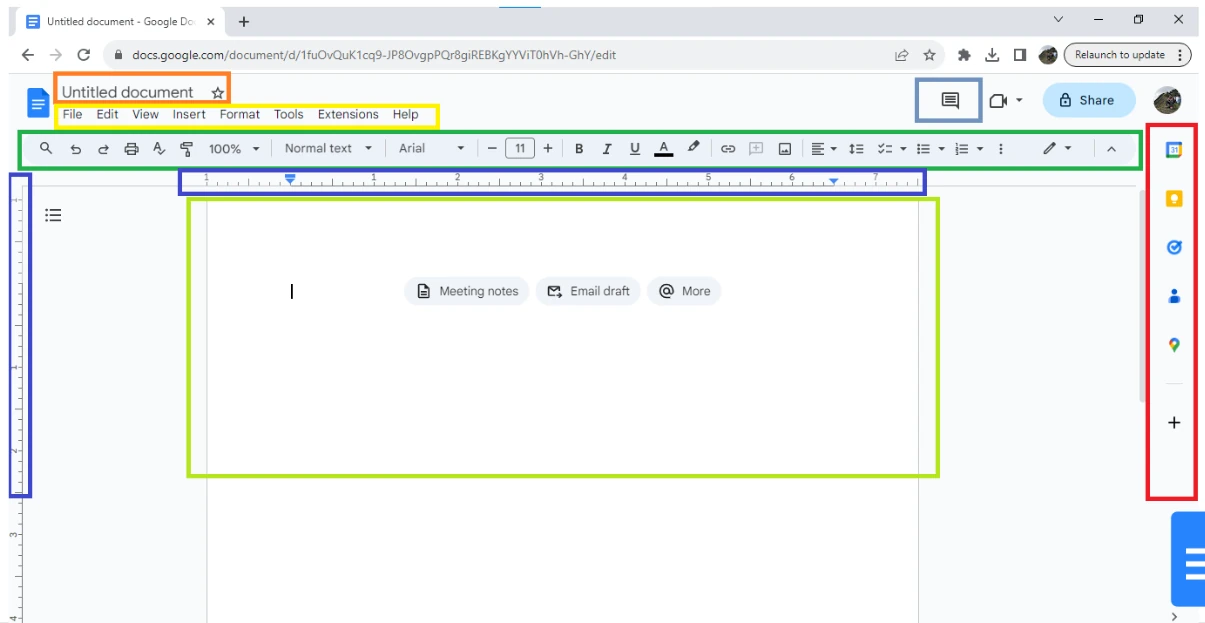The Future of Work is Collaborative – Is Your Team Missing Out?
Google Docs isn't just another word processor—it's a productivity powerhouse. 87% of knowledge workers now rely on cloud-based collaboration tools daily (Gartner, 2023). Yet most teams barely scratch the surface of what it can do.
Think about your last document edit. Did you waste time emailing versions back and forth? Struggle to track changes? Google Docs eliminates these headaches—if you know how to use it right.
"The best teams don't just share documents—they co-create in real time," — Maria Konnikova, Productivity Expert
From version history that acts like a time machine to @mentions that cut meeting time in half, this tool transforms how professionals work.
In this guide, you'll discover:
- 3 hidden Google Docs features that save 5+ hours weekly (including one 90% of users miss)
- The exact workflow remote teams like GitLab use to edit documents simultaneously without chaos
- Security settings every business user must configure—skip these and you're risking data leaks
Whether you're drafting contracts, brainstorming campaigns, or compiling research, mastering Google Docs means working smarter—not harder. Let's dive in.
Google Docs Overview
Google Docs is a web-based word processing application developed by Google, allowing users to create, edit, and store documents online. Originally launched as "Google Docs & Spreadsheets" in 2006, it was later rebranded as part of Google Workspace (formerly G Suite).
Common Professional Uses
Key Features of Google Docs
Google Docs transforms document workflows with these powerful capabilities:
Real-Time Collaboration
- See collaborators' cursors with colored initials (e.g., AB)
- Simultaneous editing with changes saved every 2 seconds
- Pro Tip: Use Ctrl+Alt+M to open chat during edits
Version History
Access via File > Version history > See version history
Document Security
| Permission Level | Best For |
|---|---|
| Viewer | Clients, external stakeholders |
| Commenter | Feedback rounds, approvals |
| Editor | Core team members only |
Getting Started Guide
Create & Name Your Doc
- Go to docs.google.com
- Click + Blank or choose a template
- Rename immediately: Click Untitled document (top-left)
Share Settings
- Click Share (top-right)
- Under "General access", choose:
- Restricted (only added people)
- Anyone with link (public/team access)
Pro Tip: Offline Access
Enable via Google Drive Settings > Offline to edit without internet. Changes sync automatically when reconnected.
Google Docs Interface Explained
These are the core elements you'll encounter when working with Google Docs. The interface may vary slightly based on your device, browser, or settings.
1. Menu Bar
Located at the top with dropdown menus:
- File: Share, print, download
- Edit: Undo, find/replace
- View: Zoom, fullscreen
- Insert: Images, tables, links
- Tools: Spelling, preferences
2. Toolbar
Quick-access formatting icons:
3. Document Area
The main workspace where you:
- Type and edit text
- Insert media/tables
- View all content
4. Collaborators' Cursors
During real-time collaboration:
Colored cursors show where others are editing
5. Ruler
Visual guides for:
- Margin adjustments
- Tab stops
- Paragraph indents
6. Comments & Suggestions
Appear as colored icons:
7. Sidebar
Access via:
Toolsmenu- Three-dot menu (top-right)
- Contains outline, styles, add-ons
8. Chat Box
Located bottom-right:

Fig. Google Docs interface elements mapped to the descriptions above
Professional Best Practices
File Organization
- Naming Convention:
Project_Type_Status_YYYYMMDD(e.g.,AcmeProposal_Draft_Review_20250315) - Use Google Drive folders with team-shared access
- Color-code folders: Right-click > Change color
Effective Commenting
Do:
- Use @mentions to notify teammates
- Mark resolved after addressing
- Add action items (TODO: Update stats)
Don't:
- Leave vague feedback ("Fix this")
- Use comments for lengthy discussions
- Forget to resolve old threads
Security Checklist
- Set document expiration dates (Business tier only)
- Download backups of final versions as PDF
- Audit sharing permissions monthly
Expand Your Knowledge
Dive deeper into technology and productivity with these related articles:
- Understanding IT – Build a solid foundation in Information Technology essentials.
- Specialist vs Generalist – 85% of companies now seek hybrid talent. Discover whether to specialize or generalize in your career, with actionable strategies to become a T-shaped professional and future-proof your skills.
- Prompt Engineering: Writing Effective AI Prompts – Master the skill of crafting precise AI prompts for better results.
- Understanding Brain Rot in the Digital Age – Break free from digital overload and regain focus.
- Effective Study Techniques for Better Learning – Discover research-backed strategies to boost learning retention.

No comments yet. Be the first to share your thoughts!